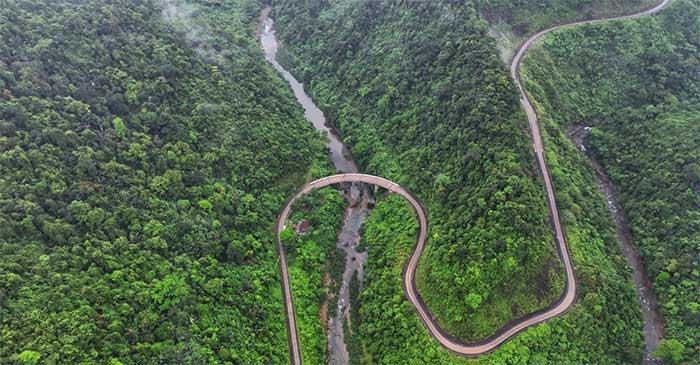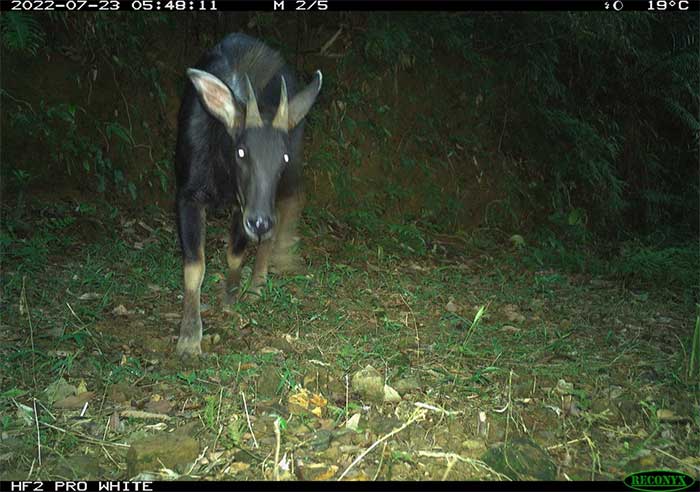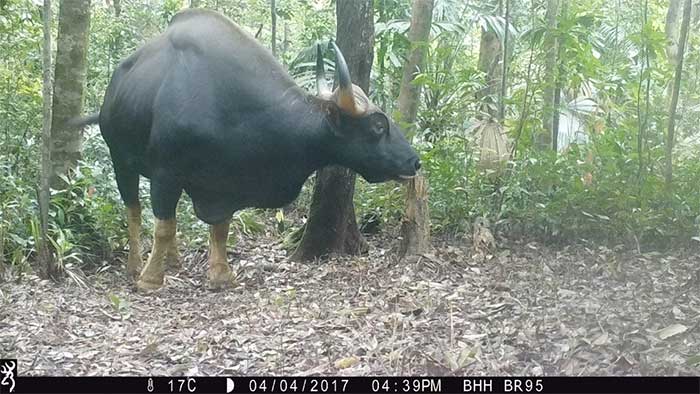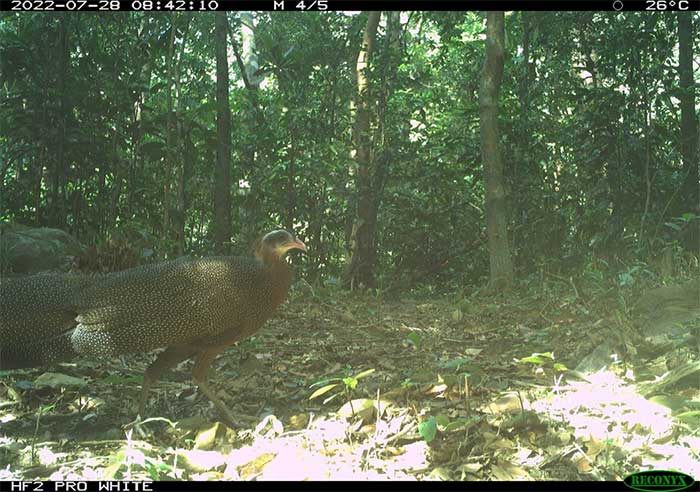Many rare and endangered animal species listed in the Red Book have been discovered in the Châu-Khe Nước Trong Nature Reserve through the use of camera traps.
The Châu-Khe Nước Trong Nature Reserve is situated in the southwest of Lệ Thủy District, Quảng Bình Province, bordering the Vietnam-Laos border and the Bắc Hướng Hóa Nature Reserve in Quảng Trị Province. This area primarily consists of evergreen tropical forests within a vast natural forest ecosystem covering approximately 500,000 hectares, boasting rich forest resources. Specifically, the Châu-Khe Nước Trong Nature Reserve spans over 22,210 hectares and is recognized by the World Wildlife Fund (WWF) as one of the 200 global biodiversity hotspots.

This area is often likened to a “paradise garden” due to the existence of lowland forest ecosystems and a variety of flora and fauna, particularly large mammals and sizable bird species.
According to preliminary statistics from the management board of the Châu-Khe Nước Trong Nature Reserve, the area is currently home to 76 species of mammals, 214 species of birds, and 671 species of reptiles. Among these, there are many rare plant and animal species at high risk of extinction. (The image shows the brown-shanked douc, a rare endemic primate that is critically endangered in Vietnam).

The Asian Black Bear was captured by a camera trap in July 2022 at the Châu-Khe Nước Trong Nature Reserve. Its scientific name is Ursus thibetanus, classified as IB in the list of endangered wildlife (according to Decree 84/2021/ND-CP). The Asian Black Bear is listed in the Red Book of the World Conservation Society, recognized as one of the species threatened with extinction that requires conservation.

The Sambar Deer, scientifically known as Capricornis milneedwardsii, is a large animal belonging to the Bovidae family found in Vietnam. Adult individuals of this hoofed mammal can measure 1.4-1.8 meters in length and weigh between 120-150 kg. They are classified as Near Threatened on the IUCN Red List.

The brown-shanked douc is a rare endemic primate species that is critically endangered in Vietnam.

The Java Pangolin, also known as the Java Truncata, is categorized as a rare and endangered species threatened with extinction, making its extraction and commercial use illegal.

The Sunda Civet (also known as the spotted civet) has the scientific name Prionodon pardicolor. This is a rare mammal species that has been included in the Red Book of Vietnam.

Mr. Bạch Thanh Hải – Director of the Châu-Khe Nước Trong Nature Reserve stated that this is one of the largest continuous natural forest areas in Vietnam, which can only be found in some regions along the Vietnam-Laos border. Notably, this area preserves a significant expanse of primary evergreen tropical forest in lowland regions; this forest type has become very rare in Vietnam due to significant impacts and has diminished in other areas, making it one of the high-value biodiversity regions of the Trường Sơn range, highly regarded by many international conservation organizations.

A gaur was recorded by a camera trap in April 2017. In Vietnam, this species is classified as Indochinese Gaur or Southeast Asian Gaur (scientific name: Bos gaurus laosiensis or Bos gaurus readei) and is listed as a rare species of level 1B in the world Red Book, categorized as Near Threatened.

In the primary tropical forest, preliminary surveys have recorded 1,030 species across 599 genera belonging to 144 families in five higher vascular plant taxa, with 36 species at risk of extinction listed in the Vietnam Red Book. Compared to other conservation areas and national parks in Vietnam, the diversity of animal species in the Châu-Khe Nước Trong Nature Reserve remains exceptionally high.

The Ocellated Pheasant (scientific name: Rheinardia ocellata) is a large bird species within the pheasant family. This is an endemic subspecies that is critically endangered in Vietnam.

A family of wild boar foraging was captured by camera traps.
Surveys and camera trap studies have detected many rare mammal species needing conservation, such as the brown-shanked douc, Asian black bear, Hà Tĩnh langur, and the striped rabbit, in this nature reserve. These findings indicate the ecological diversity of the area and highlight its ideal habitat for various animal species.


















































